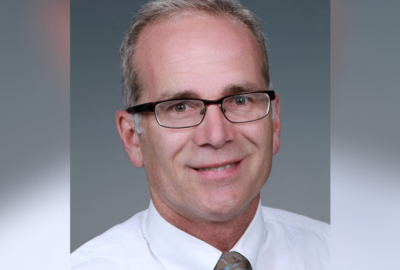
Hubbard Radio Washington DC, LLC. All rights reserved. This website is not intended for users located within the European Economic Area.
Hubbard Radio Washington DC, LLC. All rights reserved. This website is not intended for users located within the European Economic Area.
Energy's Pacific Northwest National Laboratory and Washington State University have reached a milestone to convert biocrude into diesel.
Best listening experience is on Chrome, Firefox or Safari. Subscribe to Federal Drive’s daily audio interviews on Apple Podcasts or PodcastOne.
The nation’s supply chain relies on vehicles that burn diesel fuel. Now the Energy Department’s Pacific Northwest National Laboratory, in conjunction with Washington State University, has reached a milestone in an effort to convert substances known as biocrude into diesel. For more on what’s going on, the co-director of the joint Bioproducts Institute, and a scientist at the Pacific Northwest National Laboratory, John Holladay spoke to Federal Drive with Tom Temin .
Interview transcript:
Tom Temin: Dr. Holladay, good to have you on.
John Holladay: Thank you, I’m thrilled to be here.
Tom Temin: Give us a sense of the demand that the nation will still have for diesel fuel in the first place, because all you hear about nowadays is electric cars.
John Holladay: Yeah, that’s a wonderful thing to talk about. Electric cars are incredibly important. We use about 140 billion gallons of gasoline a year and being able to replace that with electric vehicles is hugely important. But cars only deal with this light duty fleet. We move goods around, we have a lot of heavy trucking, things like that. And the U.S. uses about 60 billion gallons of diesel fuel a year right now. And that’s expected to grow, whereas gasoline is expected to decrease.
Tom Temin: Now the program you’re overseeing and working with Washington State University, is converting one thing into diesel fuel. Tell us what it is you’re starting with? What’s the raw material here?
John Holladay: Yeah, you know, for us the raw material that we are really focusing on are waste products that are causing different environmental challenges. And so the particular raw materials in this case are food waste, manures, wastewater sludges out of wastewater treatment plants, and things like that.
Tom Temin: Because in the past, the projects that we’ve heard about have to do with cast off food, oil and frialator residues and so forth turned in. But this is things that don’t seem like they start out as oil in the first place.
John Holladay: Yeah, they certainly don’t. they might have some oil in them. You’d be surprised how much lipid content is in sledges or manures. But they’re not these pure oils. And oftentimes, a lot of the biodiesel people hear about are actually vegetable oils directly.
Tom Temin: Got it. So you’re talking about garbage, basically, the impolite word for it?
John Holladay: Garbage would be a nice, impolite word.
Tom Temin: Okay. It’s family radio, so we’ll stick with that. And you did reach a milestone, I guess, if I understand it correctly, in the process side of turning these materials, biocrudes, into diesel fuel. Tell us what specifically happened recently.
John Holladay: So, the process to take these kinds of waste materials, these you refer to as garbage, into diesel fuels, two steps. And the first step, we heat these materials with heat and water. And that forms his biocrude oil. Now, the biocrude oil has a lot of cats and dogs, nasty stuff in them, and we have to be able to remove those. These are nitrogen compounds. These are things that can harm engines, and things like that. And so it’s in the refining of this biocrude oil, which is similar to refining of crude oil, that we’ve hit this milestone on. Historically, refining of complex oils causes a lot of damage to a catalyst. And the catalyst is the material that helps take the hydrogen to remove these unwanted compounds out of this biocrude. And being able to show that we could do that for long periods of time, several 1000 hours has been really important.
Tom Temin: That is to say the same capabilities that an ordinary refinery has, because they operate essentially all the time.
John Holladay: That’s right, this has to be able to operate for a long period of time, over the period, a single catalyst will have to operate for a period of a year or more. And we have to be able to demonstrate that these catalysts can be robust enough as they work with these oils.
Tom Temin: And what do we know about the economics of the resulting diesel fuel? Does it take more energy to put into this process than you get out of the resulting diesel? Or is it actually efficient?
John Holladay: Yes, well, this is really important. Two things: One, it is really efficient, both on the carbon side, the carbon that’s in these products – we need to be able to get that out into the oil really efficiently. And the energy that we use has to be really efficient. And so it is – it is efficient. In addition, it’s taking feedstock that’s causing these environmental problems that we have to actually put energy into to help with those problems.
Tom Temin: So it could result in lower additions to landfills and that kind of thing, too?
John Holladay: Lower addition to landfills, improving an aging wastewater treatment plant, helping clean up water and streams as we deal with manures more effectively. And the greenhouse gases that result from food waste, are all things that are important to us.
Tom Temin: We’re speaking with Dr. John Holladay. He’s co-director of the joint Bioproducts Institute and a scientist at the Pacific Northwest National Laboratory, part of the Energy Department. And just tell us briefly what each side brings to this whole effort, the National Laboratory and the academic institution.
John Holladay: Yeah, so thank you for the question. The academic institution, Washington State University has been a really important partner with Pacific Northwest National Laboratory in working together in bringing in new ideas to the table and thinking innovatively about how do we deal with these waste materials that we can then convert into diesel fuel that we’re talking about today and also jet fuel. So sustainable aviation fuel is a huge part of what we are working on together between PNNL and Washington State University.
Tom Temin: And what’s the delta, say, in process between the output being diesel fuel, and the output being kerosene for jets? Because they’re both needed in great quantity and will be for a long time but if you had a cup of each one, you would see they’re very, very different.
John Holladay: They are different. And that’s actually part of our research is being able to make either aviation fuel or to make diesel fuel. And to have both of them in really high quality. And the process we’re talking about today, about 15% of that diesel fuel could be sold in the aviation market. But the diesel fuel is such a high quality diesel fuel, that that’s the first market that we think about for this material.
Tom Temin: And high quality means less sulfur, correct?
John Holladay: It means less sulfur, it’s also means high cetane. So if you think about gasoline, we think about octane, but diesel fuel needs cetane. And that’s one of the critical fuel properties for a diesel engine to work, right. And this fuel exceeds the cetane that one can get from petroleum. And so it becomes a really high quality fuel that can be used in an engine.
Tom Temin: Yeah, so truck drivers will like it because anything that gives more cetane, octane, no knock – whenever you want to call it. Put a tiger in your tank, I guess. And so do you have the sense that this process that you’re working on that is now proven to run for a long time can scale to commercial proportions?
John Holladay: Yeah. So this is the reason we have to do these type of runs, is to help people reduce the risk that the money required to – for scale up can be found, right? So there is a huge amount of risk, it cost money as you scale up. And so this is exactly the kind of work that allows us to reduce that risk. And yes, we know it can scale up because the process is built off the same kind of principles that have been used for petroleum crude oil refining.
Tom Temin: So basically, then not to oversimplify, but it would simply be a difference of converting what crude material goes into the refinery, otherwise the refinery could operate as the industry is used to operating it, in theory?
John Holladay: Yeah, yeah, in theory, that’s the case. It gets complex because the amount of oxygen or nitrogen or other things are in the material you have – may not be compatible with a refinery. We may have to build a small unit within a refinery or blend it with petroleum. And both of those are possibilities. And depending upon different refiners, they would prefer one way or the other.
Tom Temin: Because you have the federal government and you have academia here as parties in developing this – any interest yet from industry? Are they sort of asking, “Hey, Holladay, what’s going on there?”
John Holladay: So the short answer is, is yes, there’s quite a bit of work that we’re doing and including industrial partners reaching out asking for samples.
Tom Temin: Right, so you have tested this material in vehicles, then correct?
John Holladay: We have tested these materials in engines. Yes, absolutely. Testing them in vehicles is another step. And just making more of the material for long term testing vehicles is certainly one of those steps that comes next.
Tom Temin: And you have a fuel program basically that you operate for the Pacific Northwest National Laboratory. Anything else going on exciting we should know about briefly?
John Holladay: Sure. You know, I talked about sustainable aviation fuel, we have other programs that are making sustainable aviation fuel. The first full scale plant being built now by a company called LanzaJet. This takes waste gasses from industrial settings, and converts that all the way to a really high quality aviation fuel. And then we have projects that are focused on making chemicals from the same kind of waste resources, whether they be both biomass or other waste resources, to make things that are currently made in the petrochemical industry.
Tom Temin: Exciting stuff. Dr. John Holladay is co-director of the joint Bioproducts Institute, and he’s a scientist at the Pacific Northwest National Laboratory. Thanks so much for joining me.
John Holladay: Oh, thank you so much for allowing me to be here.
Tom Temin: We’ll post this interview along with a link to more information at FederalNewsNetwork.com/FederalDrive. Fill your tank with the Federal Drive. Subscribe at Apple Podcasts or wherever you get your shows.
Copyright © 2024 Federal News Network. All rights reserved. This website is not intended for users located within the European Economic Area.
Tom Temin is host of the Federal Drive and has been providing insight on federal technology and management issues for more than 30 years.
Follow @tteminWFED

